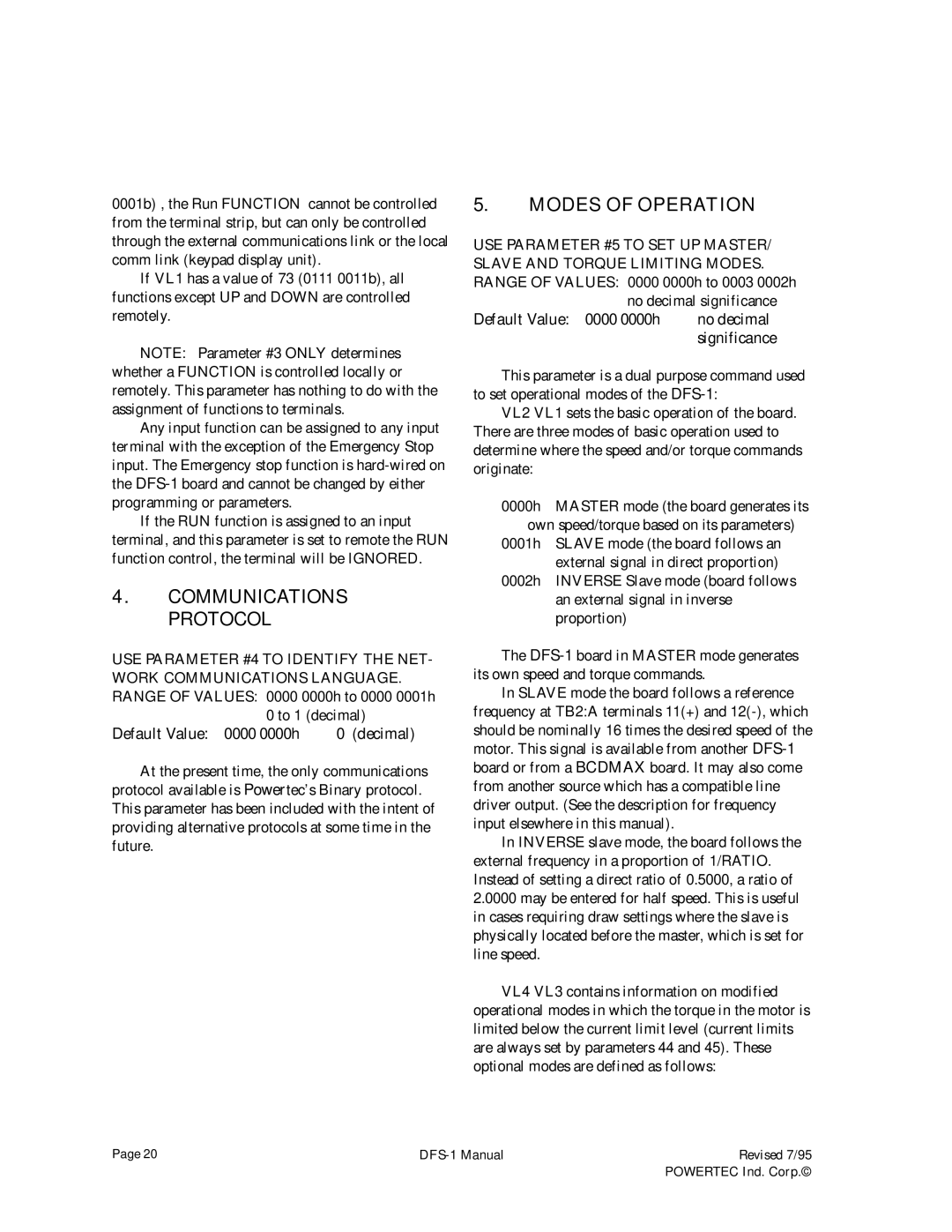0001b) , the Run FUNCTION cannot be controlled from the terminal strip, but can only be controlled through the external communications link or the local comm link (keypad display unit).
If VL1 has a value of 73 (0111 0011b), all functions except UP and DOWN are controlled remotely.
NOTE: Parameter #3 ONLY determines whether a FUNCTION is controlled locally or remotely. This parameter has nothing to do with the assignment of functions to terminals.
Any input function can be assigned to any input terminal with the exception of the Emergency Stop input. The Emergency stop function is
If the RUN function is assigned to an input terminal, and this parameter is set to remote the RUN function control, the terminal will be IGNORED.
4.COMMUNICATIONS PROTOCOL
USE PARAMETER #4 TO IDENTIFY THE NET- WORK COMMUNICATIONS LANGUAGE. RANGE OF VALUES: 0000 0000h to 0000 0001h
0 to 1 (decimal) | |
Default Value: 0000 0000h | 0 (decimal) |
At the present time, the only communications protocol available is Powertec’s Binary protocol. This parameter has been included with the intent of providing alternative protocols at some time in the future.
5.MODES OF OPERATION
USE PARAMETER #5 TO SET UP MASTER/ SLAVE AND TORQUE LIMITING MODES. RANGE OF VALUES: 0000 0000h to 0003 0002h
no decimal significance
Default Value: 0000 0000h no decimal significance
This parameter is a dual purpose command used to set operational modes of the
VL2 VL1 sets the basic operation of the board. There are three modes of basic operation used to determine where the speed and/or torque commands originate:
0000h MASTER mode (the board generates its own speed/torque based on its parameters)
0001h SLAVE mode (the board follows an external signal in direct proportion)
0002h INVERSE Slave mode (board follows an external signal in inverse proportion)
The
In SLAVE mode the board follows a reference frequency at TB2:A terminals 11(+) and
In INVERSE slave mode, the board follows the external frequency in a proportion of 1/RATIO. Instead of setting a direct ratio of 0.5000, a ratio of 2.0000 may be entered for half speed. This is useful in cases requiring draw settings where the slave is physically located before the master, which is set for line speed.
VL4 VL3 contains information on modified operational modes in which the torque in the motor is limited below the current limit level (current limits are always set by parameters 44 and 45). These optional modes are defined as follows:
Page 20 | Revised 7/95 | |
|
| POWERTEC Ind. Corp.© |
